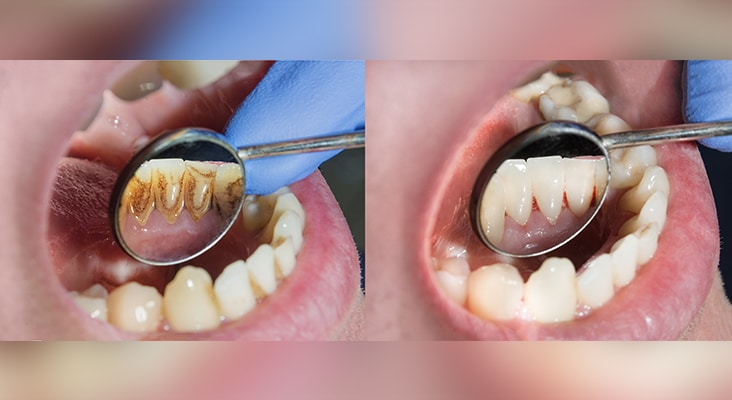
It’s Time to Go Back to the Basics
Ultrasonic instrumentation is used today by many dental hygienists and dentists around the world. However, with the onset of the COVID-19 pandemic, dental procedures involving aerosol production are contraindicated, leading to the question, “Is it time to return to hand scaling?”
Ultrasonic instrumentation is used today by many dental hygienists and dentists around the world. However, with the onset of the COVID-19 pandemic, dental procedures involving aerosol production are contraindicated, leading to the question, “Is it time to return to hand scaling?” I believe the answer is yes.
More than 50 years ago, hand instrumentation was the standard of periodontal care, with ultrasonic scaling limited to patients with generalized, heavy, tenacious, and chalky supragingival deposits.1 Thoroughly removing calculus and rough cementum by root planing to provide a glassy smooth surface was the desired outcome in an effort to reduce the reattachment of endotoxins, pathogens, and re-accumulation of calculus, and to generate biologically acceptable root surfaces. However, inadvertent excessive pressure, or over-instrumentation, can often result in sensitivity and damage to the tooth structure. Thus, the once limited utilization of ultrasonic instrumentation was expanded to use on a low setting to remove bacteria and calculus, while preserving tooth structure and preventing hypersensitivity.2 However, the use of low-powered ultrasonics on calculus increased the likelihood of burnishing deposits, making them almost impossible to remove. Because the evidence demonstrates that all calculus must be removed in order for inflammation to subside, a complementary approach that incorporated both hand and power instrumentation was recommended.3
Ultrasonic scalers provide mechanical disruption of plaque biofilm, as well as lavage to help flush sulci and pockets to promote tissue healing. The introduction of thinner inserts/tips that improve access and that can be used on higher power to decrease the risk of burnished calculus increased the effectiveness of ultrasonic instrumentation.
However, our world has been affected by the COVID-19 pandemic, which caused the closure of most dental practices except for emergency treatment due to the unknown yet highly transmissible nature of this coronavirus. Infection control and prevention protocols are being revised in all aspects of healthcare, dentistry included. Because ultrasonic scalers create dental aerosols, their use is currently contraindicated. So, back to the basics? Yes, I believe we need to go back to hand scaling and debridement using traditional scalers and curets. Today, an assortment of different types, lengths, and varieties are available to help clinicians meet the needs of periodontal care.
An in vitro study found that both Gracey curets and ultrasonic scalers are equally capable of removing hard and soft deposits from the periodontium.4 Gracey curets produced a smoother root surface than ultrasonic scalers, but not by a significant amount. Gracey curets are designed for root planing and enables access to deep periodontal pockets and furcation areas and are area- and tooth-specific. Graceys are now available in a variety of shank lengths, blade sizes, flexibility (rigid/extra rigid), and instrument types.
Until the risk posed by the novel coronavirus has been reduced, we should consider this an opportunity to refresh our memories and skills of tooth morphology, hand-activated instrument technique, usage, and indications, and re-assess our practice’s instrument inventory including evaluating instrument tips and sharpness. Ensure that the dental practice has an adequate supply of sharpening stones or other sharpening methods readily available. Embrace all of the recommendations given by the World Health Organization and governmental organizations to protect ourselves, each other, and our patients.
REFERENCES
- Reynolds B. Ultracomfortable, ultraeffective ultrasonics. Available at: https://idh.cdeworld.com/courses/4903-ultracomfortable-ultraeffective-ultrasonics
- Stemple Hinchman S, Funk A, DeBiase C, Frere C. Ultrasonic instrumentation instruction in dental hygiene programs in the United States. J Dent Hyg. 2016;90:135–142.
- Matsuda S. Decision making in ultrasonic instrumentation. Dimensions of Dental Hygiene. 2017;15:24–26.
- Zafar MS. Comparing the effects of manual and ultrasonic instrumentation on root surface mechanical properties. Eur J Dent. 2016;10: 517–521.

